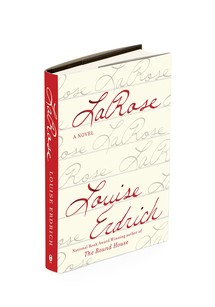Louise Erdrich's LaRose is a brutal, ultimately buoyant dramatization of the way unexpected kinships heal us. But before the healing come the wounds. The novel begins with Landreaux Iron, a recovered and respected member of the North Dakota Ojibwe tribe, hunting in the woods near his house. Landreaux takes aim at a buck he's been appraising all summer and fires, accidentally shooting his 5-year-old neighbor instead. The boy's father, Peter Ravich, is Landreaux's dear friend, a white man who's steadied the hunter's shakier moments of sobriety. Their wives are half sisters. The families would have shared the venison.
The territory of Erdrich's Faulknerian oeuvre is the boundary between a North Dakota Ojibwe reservation and the adjacent white towns. LaRose gives us this friction in microcosm. The reservation border runs through the woods separating the Iron and Ravich homes; Landreaux's bullet rips across it. Efforts to suture this gash are themselves profoundly painful. After a Native American sweat lodge ceremony, Landreaux and his wife decide to right this grave wrong by doing the unthinkable: giving the Raviches their youngest son, LaRose. The boy embodies the intergenerational trauma coiled into his people's DNA. Grasping for relief from afflictions they seem destined to suffer—tuberculosis, drug and alcohol abuse, grief—characters self-medicate with CNN, OxyContinand thoughts of suicide. As the novel's antagonist, a vengeful addict named Romeo bent on destroying Landreaux, sees it, "Pain is dotted all around, glowing from the deep chest wells of his people."
Erdrich offers salve for this radioactive hurt as the families learn to share LaRose. Most affectingly, Erdrich reclaims the everyday acts of girls and women that are so often dismissed as frivolous—makeovers, baking, volleyball, gardening—and recasts them for what they are: rituals of female bonding and sources of sometimes frightening power.


